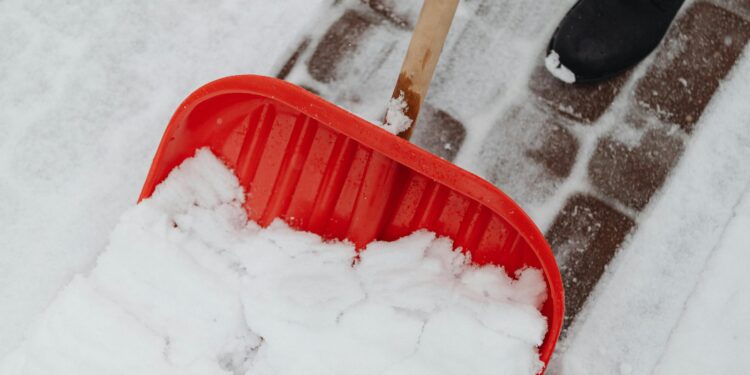Winter is pretty exciting, but if comes with a chore that could be tiresome, snow shoveling. Snow shoveling is a common winter chore, mostly done in areas that are prone to heavy snowfall.
During winter, countless individuals step outside fully clothed with puffer jackets, mittens, and with shovels at hand, to clear their driveway. This seemingly mundane task could be putting the health of certain individuals (people over 50) at risk.

The Physical Demands of Snow Shoveling
Clearing snow from the driveway can sound simple, but it’s actually a full-body workout. Lifting heavy piles of snow, pushing the shovel through thick layers, and twisting your body to toss the show aside, is a lot. Each of these movements uses a lot of energy and puts pressure on your muscles, especially the muscles in your arms, back, and legs.
But it’s not just your muscles working hard. Snow shoveling can work the lungs overtime, especially if you’re not used to intense exercise. Your breathing gets heavier and your heart beats fast against your ribcage. Pushing yourself too much can be dangerous, especially if you’re above 50 or you suffer from certain health issues.
Health Risks for Older Adults
Heart Attack: Shoveling snow is just like forcing your body into a tough workout, which can be risky. The cold weather makes your blood vessels tighten, which makes it harder for blood to flow. When you start lifting heavy snow and pushing it around, your heart starts to pump faster to keep up with the activity. If you already have problems like high blood pressure or high cholesterol, your heart is working overtime. The extra pressure could cause a heart attack.
Back Injury: This is one of the many impacts shoveling snow can cause for older adults. When you lift snow the wrong way, like bending at your waist instead of squatting with your knees, you can easily hurt your back. Snow might look soft, but it’s actually heavy, especially when it’s wet. All that lifting and twisting can sprain your back muscles or even cause a slipped disc which is even worse. A back injury makes it hard to walk, sit, or even do simple stuff. The worst thing about it is that it lasts for weeks or even months.
Other Injuries: Wet snow or icy sidewalks make it way easier to slip and fall during shoveling. This accident can cause a sprained ankle or even broken bones. If you push yourself too hard, you can also sprain other parts of your body like your arms, shoulders, or knees. These injuries take a longer time to heal in older people.
Alternative Solutions
One of the best ways to avoid the risk of shoveling snow is to hire someone else to do the job for you. There are professional snow removal services that can take care of the hard work. It is convenient because you don’t have to stress about the weather or hurt yourself trying to clear out the driveway. Also, you’ll be rest assured that the job will be done right while you are safe inside.
Sometimes, the easiest solution is just asking for help. If you have younger family members, neighbors, or friends, you can ask them to pitch in. Using snow removal tools like snow blowers can make it much easier and safer. Plus, you can clear large areas without much effort using snow removal tools.
Bottom Line
Shoveling snow might seem like no big deal, but it can actually be risky, especially for older people. It puts a lot of strain on your body, like your heart, back, and muscles, which can lead to serious problems like heart attacks or injuries. It’s smart to think about safer options, like hiring someone to do it or asking a younger family member for help. Using tools like snow blowers can also make it easier and safer.

















